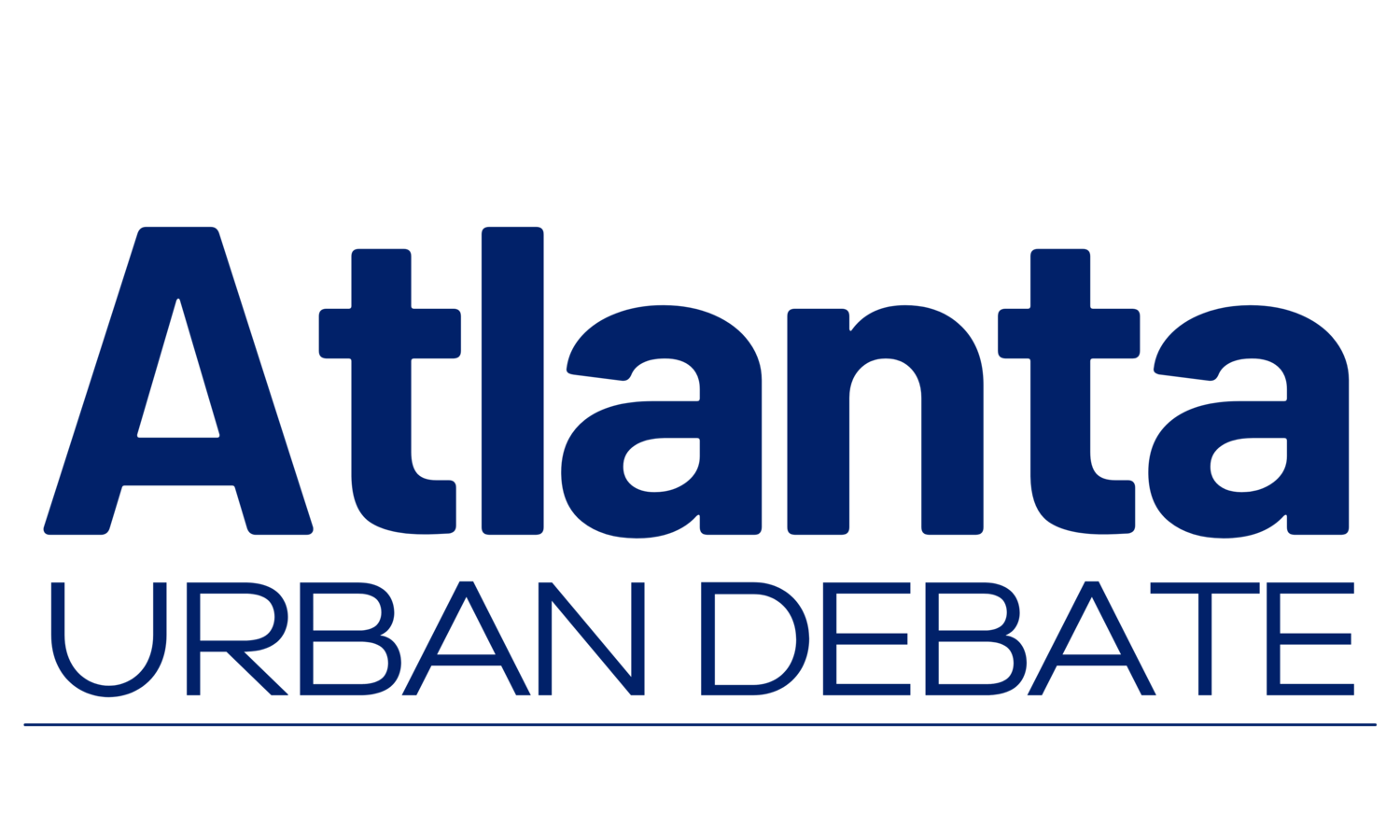The Atlanta Urban Debate League is committed to providing excellent debate education programs, services, and opportunities to diverse students, educators, and members of the community!
Introducing Policy Debate
Being Negative
Introduction
When debaters are on the negative side, they prove that the affirmative’s case is a bad idea. They can do so by defending what’s happening right now, or the status quo. In Varsity divisions, debaters will have the option to read alternative proposals, which will be covered later.
To defend the status quo, the negative team will read a disadvantage. A complete disadvantage will identify a fact about the world right now (uniqueness), explain how the plan would change that fact (link), and describe the disastrous results such a change would have (impact). Some disadvantages will include an internal link, which adds an extra step between the change described by the link and the result described by the impact.
Under the following resolution, and in response to the following plan, a disadvantage could look like this:
Resolution: Waffle House should change its menu.
Affirmative Plan: Waffle House should stop selling waffles.
Negative Disadvantage
Uniqueness: Waffle House is currently a profitable company.
Link: Waffle sales are key to Waffle Houses’ profit margins.
Internal Link: Profits are necessary to keep Waffle House in business.
Impact: Waffle House would shut down.
Learning Objectives
In this section, students should:
Learn to identify each part of a negative disadvantage.
Understand that they need to read every part of the disadvantage in every negative debate round.
Demonstrate their knowledge through the ability to write a hypothetical disadvantage if given a plan text.
Points of Improvement
Here are some things to look out for as you teach your students about the negative side:
Debaters can easily read each part of a disadvantage in their 1NC without understanding why they’re doing it. After introducing the key terms in your introductory lesson, gauge their understanding of them with the mock disadvantage activity “What Could Go Wrong?”
If they don’t understand uniqueness, their disadvantage may not describe a change caused by the plan, rather, it could describe what’s happening already.
If they don’t understand links, their disadvantage might be unrelated to the affirmative, or it may be tied to some part of it that isn’t the plan.
If they don’t understand impacts, their disadvantage may lack a clear consequence. In practice debates, they may emphasize the internal links to their impact, not the impact itself.
Signs of Progress
Here are some positive signs that students are beginning to understand the negative side:
Students understand that they must defend the status quo when they are negative.
Students know that they do NOT have to argue in favor of the affirmative harms.
Students can identify each part of a disadvantage using the correct term.
Students can write their own mock disadvantages that feature all of the necessary parts.
Students articulate disadvantages in terms of consequences to plan action.
In practice debate rounds, students read and extend each part of the disadvantage as necessary.
